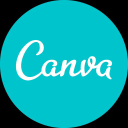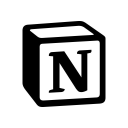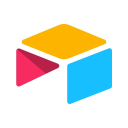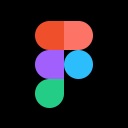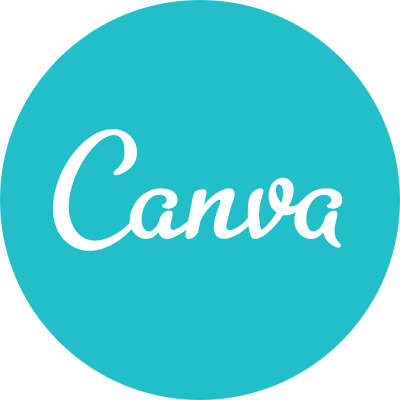How Two College Friends Started A $25K/Month On-Demand Development Business
Note: This business is no longer running. It was started in 2022 and ended in 2023. Reason for closure: Shut down.
Hello! Who are you and what business did you start?
My name is Neil Granberry and I am the co-founder of Cottage Software alongside my friend, Hunter Hodnett, who founded the business. Cottage helps web designers and developers turn designs into code fast and affordably via a tech platform powered by learning developers.
We get Figma designs from clients and turn them into coding competitions so that our platform of 100+ learning developers can compete to build the best React components.
Right now we’re making $25,000 per month as a tech-enabled agency of just two people. Our success is proving our product’s value as we begin to sell the product directly to web design and development agencies.
What's your backstory and how did you come up with the idea?
February: First contact since our undergrad days at Auburn, circa 2014

This Twitter exchange began a series of conversations between us that quickly turned into me doing part-time competitor research, market research, and pitch deck editing. Hunter started educating me on tech and I tried to use my newfound MBA skills to provide some value.
April: Kick-Starting Traction — Agency Model + First Client

We needed to seed our marketplace on the demand side, so we planned to operate a development agency and then use the freelancer marketplace to add capacity and help us develop faster. Soon after outlining this strategy we had one of those serendipitous moments that you need to get some momentum.
When it comes to building your first product, scale it down to the essentials, launch, iterate, and launch again.
Sequense’s CEO, Kimber, saw Hunter pitch at Draper’s demo day in February, and a few months later they were bidding out the development of their MVP. We successfully sold our skills (mostly Hunter’s skills actually), our flexibility, and our vision for the future of Cottage, not to mention a bit of a first customer discount.
We got them from Figma prototype → MVP, and we’re fortunate to still have them as our largest client building their next set of features. This experience proved to be a fantastic learning experience that has set us up for success. Sequense has the privilege of being the first company (ever?) to have their Figma designs transformed into React components in our new competition model. Speaking of the new model, it didn’t even exist at this point.
May: New Ideas Lead to a Pivot and a New Model:

First week of May, I flew out to Austin because Hunter and I haven’t been in the same room since 2014. Sleeping on his couch all week, I got a taste of the true bootstrapped startup experience. During that week, we made our first (and hopefully last) pivot. I know there are dozens of other hiccups and obstacles in our future, but I have a ton of conviction that we’ve nailed a clear, powerful, and achievable vision.
The real breakthrough was a niche down into a different source of development supply. Instead of targeting senior developers and architects who wanted part-time work, we are targeting self-taught and Bootcamp developers who are looking to prove themselves. These developers weren’t getting the $150k+ offers, and oftentimes they had trouble getting any development offers at all. They are more often than not paying someone to learn, and we could offer that learning free and even pay them when they won.
Take us through the process of designing, prototyping, and manufacturing your first product.
We launched an MVP built with no-code solutions, Softr and Airtable, with some sprinkles of custom coding where necessary. This was an ugly, but functional product. Our value proposition is differentiated enough (the fact we pay our developers) that a less-than-ideal product was still able to get traction. We strongly endorse using no-code to validate your idea, then going down the path of UX/UI work and custom web development.
We’ve only built half of the product so far. We’ve built the half that lets developers compete the built the best components, but we have yet to build the half that lets our clients put their work directly on the platform. We are still handling that function by hand. This is us putting the advice “do things that don’t scale” to the test. Doing this work by hand helps us understand our clients' pain points and brainstorm solutions that solve those.
Describe the process of launching the business.
We’ve worked hard to be active on Twitter and LinkedIn. I held about a dozen customer discovery interviews with learning developers before writing the copy for the landing page, then we used Linkedin and Twitter to hype our launch to collect emails via a landing page we built with Carrd.
This launch was the developer-facing side of our business, so we focused on addressing the insecurities that they mentioned in our customer interviews. Specifically, every dev we talked to mentioned “imposter syndrome” as a leading fear when it comes to shifting from bootcamp grad to their first job. They resonated with doing “real” work from “real” clients, instead of class examples.
On launch day we had ~250 sign-ups that converted to about ~75 users.

I wrote some content to accompany the launch day buzz, but we already knew through the signups that we would have enough users to validate with. Our goals for the launch were to prove the concept and get feedback. Because we don’t have a direct competitor in the space, we didn’t know for sure that our model would work. Through the two weeks following launch, we’ve effectively proven that the concept can be successful and have a laundry list of improvements to make it work at scale.
I joined some communities for startups that were in adjacent markets. These startups had the same user profile as our users, so this was an opportunity for me to do some sleuthing on what their needs were, how they communicated, and how we could best target them.
Since launch, what has worked to attract and retain customers?
The short answer for us is that we have a compelling offer for our developers. There aren’t any other platforms that allow them to get paid. Having a compelling offer gives you lots of room to make mistakes. For example, we had a bug that caused several developers to lose hours of their work, but we still managed to retain those users.
We’ve started analyzing our user data with PostHog to get an understanding of how users were using the product, but still, most of our insights come from direct communication with users in Discord.
Our platform is predicated on us taking our clients' development work and turning that work into the competition. The complexity of a two-sided marketplace makes growth hard, but also provides us a nice moat. We haven’t tried to turn on the growth for developers because we don’t yet have enough work for them to do. As we begin to add demand-side users other than ourselves, we’ll have a new challenge, which is to balance our supply and demand.
How are you doing today and what does the future look like?
This month, we will do about $25,000 in revenue through services, but only about $10,000 is related to work that was on the platform. Our target gross margin for work on the platform is >50%, but we still need to develop an effective pricing strategy. One of the biggest challenges is that not all designs are created equal in terms of complexity, so we need to develop an estimation system or tool that allows us to scale that process, which is currently being done by hand.
We get a lot of inbound leads through our placement on Softr.io’s Experts list, and our remaining leads tend to be the word of mouth or LinkedIn. As our ideal customer profile changes from Startups to Agencies, we’ll need to develop new channels.
We are currently working out some technical complexities that are preventing us from taking on more demand-side clients. As we resolve these challenges, we plan to attract and retain new clients that are agencies themselves. Currently, we are the only agency using the platform, but to scale, we will pull back on the agency work in exchange for more platform work from other agencies. We expect B2B outbound sales, content marketing, and targeted ad placements to be our top-of-funnel strategy.
Through starting the business, have you learned anything particularly helpful or advantageous?
One of the best decisions we made was getting into a good rhythm for communication. Now we’re meeting daily in a quick standup and having at least 2-3 longer conversations about strategy or big decisions that we need to make.
We manage our work through a Kanban board in Notion and review that progress regularly. Notion is also a great place for us to put our ideas down that are good ideas, but not good ideas for right now.
This brings us to a second reason I think we’ve had some success, ruthless prioritization. I’m not a perfectionist, but some of the stuff we’ve put out there still made me cringe. It’s necessary though to move fast and get comfortable with good enough. Many of the things I learned as an Engineer at Toyota are not applicable in the startup context. There is no value in optimizing or automating at the earliest stages.
What platform/tools do you use for your business?
Business Critical Software:
Notion = Client-facing project management, resources, notes and internal operations tools
Airtable + Softr = No-code web apps
Figma = UX/UI Designs, graphic design
Discord = Community hosting
Other software we use and like, but could probably replace:
Miro = Roadmaps, visual whiteboarding, and brainstorming tool
Canva = Pitch deck, graphic design
PostHog = User Analytics
Gusto = Payroll
What have been the most influential books, podcasts, or other resources?
I find that reading and consuming podcasts for me can be a way to avoid doing the work. I like Twitter as a replacement for consuming long-format stuff while still staying informed. Follow the leaders in your niche, VCs, and other founders. Start communicating with them regularly, and as you find your voice start creating and sharing your content. This has a triple purpose of both building your brand, providing a place to learn, and promoting your startup.
Having said that, I found Crossing the Chasm particularly useful when it comes to thinking about building a B2B software product, but I don’t recommend non-tactical books in general.
Advice for other entrepreneurs who want to get started or are just starting out?
When it comes to building your first product, scale it down to the essentials, launch, iterate, and launch again.
We’ve found a ton of value in shipping fast because we have our users all in Discord. Our users offer us immediate feedback when we break things, and they share their product suggestions directly with us. If it makes sense for your product to have a community, it is incredibly powerful to have that direct line of communication with your users. You see community building as a powerful force in Web3 and DAOs, but if you can incorporate it into your idea, it can have a huge impact.
Before we built our community, I joined some communities for startups that were in adjacent markets. These startups had the same user profile as our users, so this was an opportunity for me to do some sleuthing on what their needs were, how they communicated, and how we could best target them.
Where can we go to learn more?
- Website
- @hunterhodnett
- neil@joincottage.com
If you have any questions or comments, drop a comment below!

Download the report and join our email newsletter packed with business ideas and money-making opportunities, backed by real-life case studies.

Download the report and join our email newsletter packed with business ideas and money-making opportunities, backed by real-life case studies.

Download the report and join our email newsletter packed with business ideas and money-making opportunities, backed by real-life case studies.

Download the report and join our email newsletter packed with business ideas and money-making opportunities, backed by real-life case studies.

Download the report and join our email newsletter packed with business ideas and money-making opportunities, backed by real-life case studies.

Download the report and join our email newsletter packed with business ideas and money-making opportunities, backed by real-life case studies.

Download the report and join our email newsletter packed with business ideas and money-making opportunities, backed by real-life case studies.

Download the report and join our email newsletter packed with business ideas and money-making opportunities, backed by real-life case studies.

